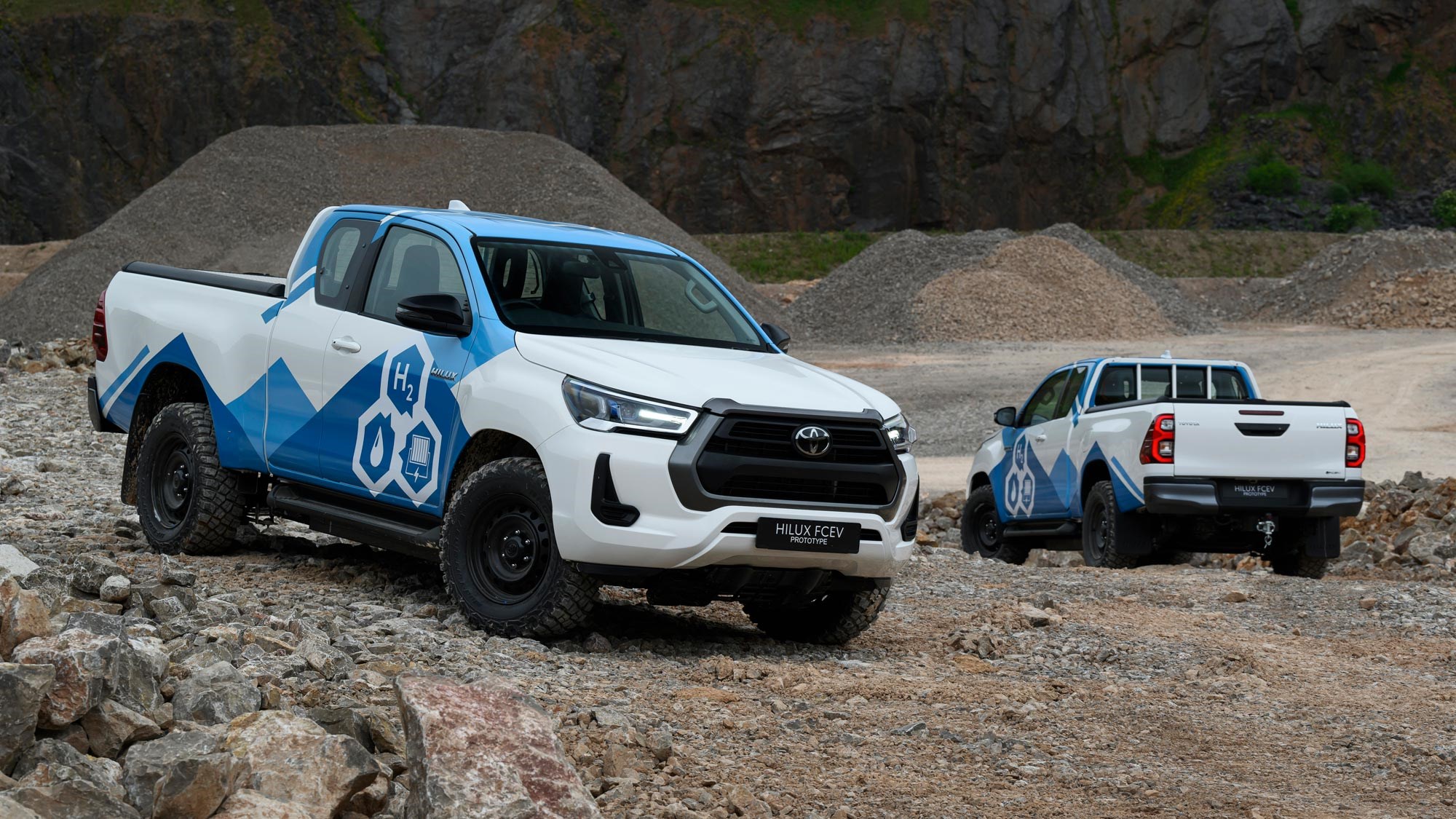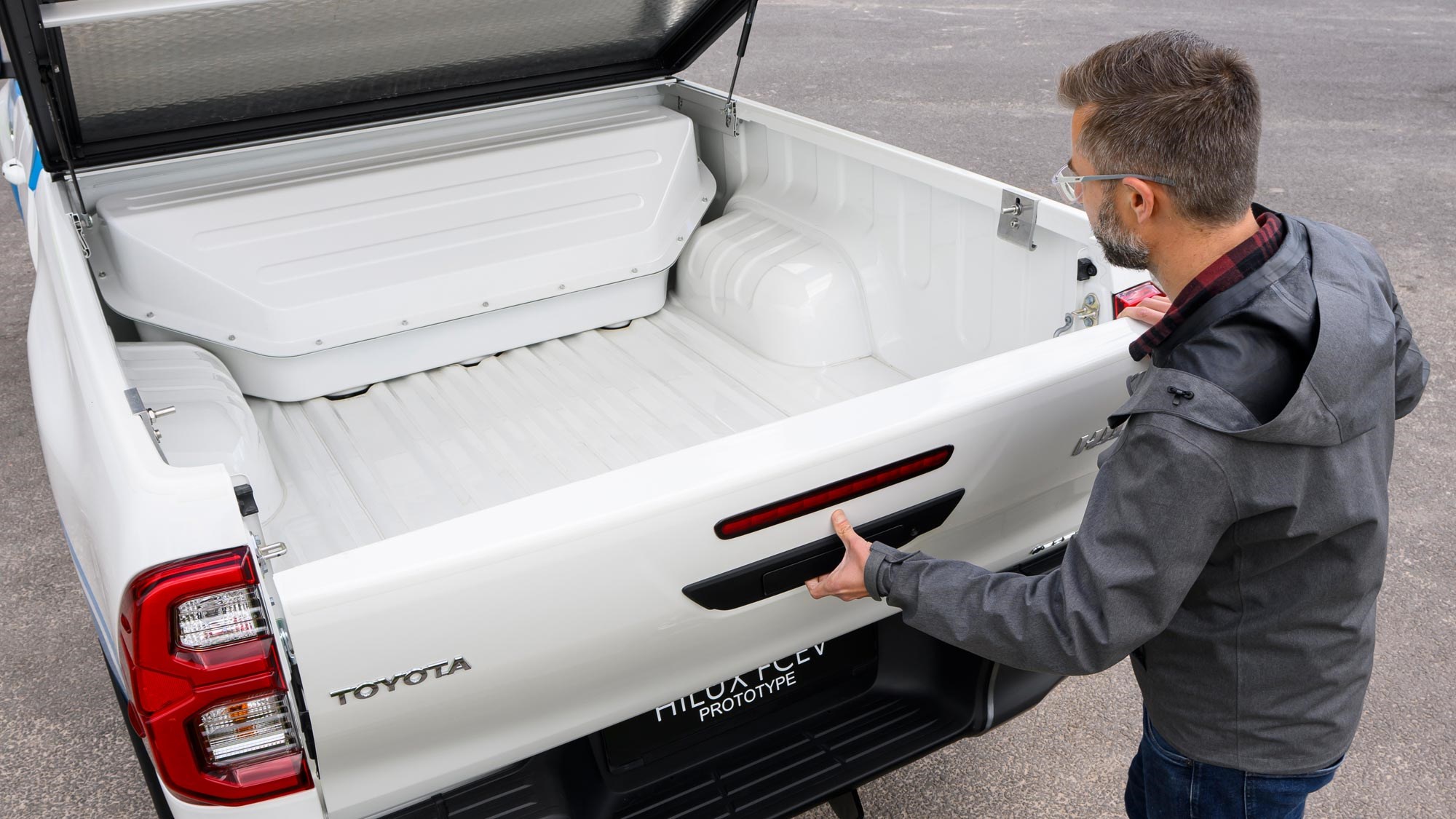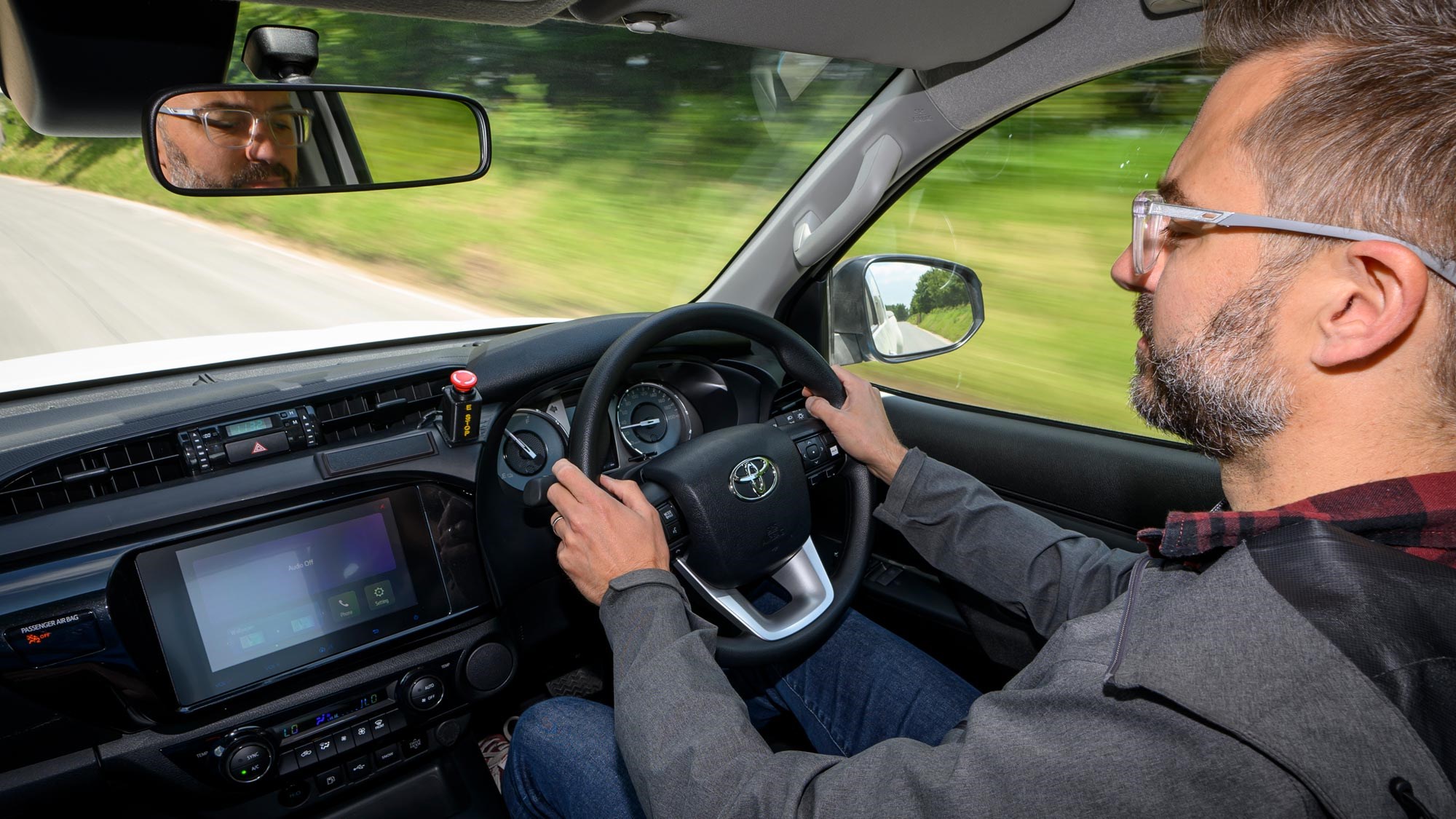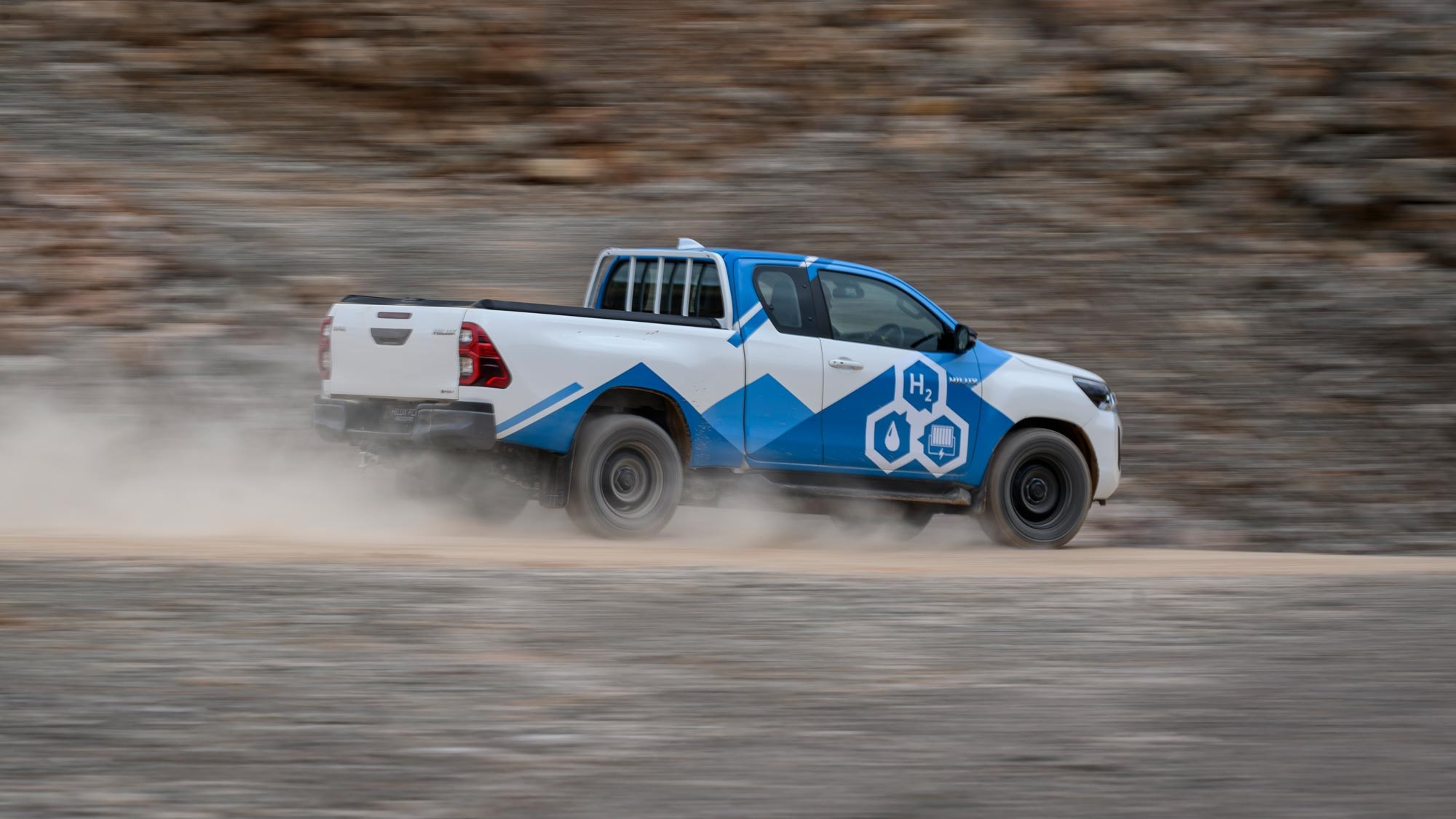► Toyota Hilux hydrogen fuel cell prototype driven
► Built at Toyota’s UK factory at Burnaston
► Could make it to UK roads in next few years
The steady rise in electric car sales has, it’s fair to say, not been mirrored in the commercial vehicle world. There are scenarios where vehicles that you plug in simply won’t work. Enter, potentially, vehicles like the Toyota Hilux hydrogen fuel cell.
Toyota only started working on a hydrogen fuel cell Hilux in 2022, before showing off the first vehicles in September 2023. In summer 2024, it’s ready to let customers and media have a go, and we have been one of only a few to have a go.

At a glance
Pros: Zero-emission pickup, bigger range than electric offers, lots of low-down torque
Cons: Some ergonomics need sorting, still a few years off production, infrastructure has to catch up
Why is Toyota making a hydrogen Hilux?
In the quest for zero-emission motoring, electric vehicles work perfectly for plenty, but there are some situations where they are more hassle than it’s worth.
One such situation is the remote quarry where in the Midlands where we find ourselves to try out one of the first prototype Toyota Hilux trucks with a hydrogen fuel cell powertrain. Taking the vehicles off site to charge them is not an option – there isn’t exactly a handy fast charging location just around the corner – and nor is installing a massive bank of chargers. To reach this site would require around 48 miles of cables apparently.

But pickup trucks have to go zero emission, like everything else, so diesel won’t cut it eventually. Which is why commercial vehicles, certainly larger ones, are eyeing up the possibility of hydrogen as a fuel, despite it having not taken off in the UK. Recent years have seen filling stations closing rather than opening, but Toyota is not the only manufacturer to be exploring the tech – Vauxhall has created a hydrogen Vivaro van and confirmed that it will be adding a large Movano fuel cell to the offering as well.
Toyota also has the technology at its fingertips, given that it sold the Mirai saloon in the UK until 2022 when lack of demand brought this project to an end. It meant that Toyota had easy access to the necessary kit, though.
Tell us more about the technology in the Toyota Hilux hydrogen fuel cell
This project has been remarkably fast by vehicle-development standards but that’s because it’s comparatively simple in many ways. All Toyota had to do was take a Hilux and shove a Mirai powertrain underneath. Easy.
If you’re being pedantic then it isn’t quite as simple as that, as there are more components required to power a hydrogen fuel cell car than there are in a diesel. First there is the motor, which sits where the engine goes in a standard Hilux. Then there are the three high-pressure tanks that hold the hydrogen – these take 2.6kg each (7.8kg in total) and are jammed into a slightly modified chassis frame underneath the cab.

Finally there is the battery, which has to go somewhere. The only remaining space is in the front of the loading bay, which has an obvious impact on how much stuff you could carry.
Obviously, Toyota has tucking this away as one of its top priorities for when this truck makes it to production. It’ll probably go under the rear seats, but that requires a bit more tweaking and for now they just wanted to get on with testing.
What about the rest of the truck?
The prototype hydrogen vehicles are all based on an extended cab Hilux – that’s the version that gets a small bench-style rear seat so there is enough room to squeeze a couple of people back there to get out to the far field but expect them to start complaining if you head out on a long trek down the motorway.

The rest of the cabin is pretty much unchanged, with a couple of minor differences. One being the rev counter, which is now a battery charge gauge. Another is the gear lever, which is the tiny joystick-style shifter from the Mirai – something that looks slightly incongruous in the hefty Hilux.
Finally, there is a huge ‘E[mergency] Stop’ button on the dash, which is a reminder that this is still a work in progress.
Because it’s a testing vehicle first and foremost, there are a few things that aren’t connected, like the stability control and traction control. Oh, and in a bid to minimise weight, the trucks are rear-wheel-drive only. And we’re heading out to test them on a loose gravel surface…
What is the hydrogen Toyota Hilux like to drive?
There are only 10 of these trucks in existence, and only five that are being used for public testing. So with this fact and the multi-million-pound investment statistics ringing in my ears, I choose to ignore the obvious temptations of a low-grip surface, rear-wheel-drive and no electronic aids presents. That momentary feeling of rally-style heroism wouldn’t be worth the walk of shame if (when) it all went wrong…

Instead, we inch around the first section, getting a handle on how remarkably like a Hilux this feels in many ways. The first thing that strikes is the noise, or lack of it. We’re used to the silence of electric cars and vans, but this still feels odd in a truck where the usual soundtrack is that of a big diesel engine.
Almost immediately we are onto the gravel, though, which means the noise of stones hitting the underside takes over. Another reminder that sending this sideways would result in a very awkward conversation with all the engineers waiting back at base.

The other striking factor relates to some of the few numbers that Toyota has released about this truck. The powertrain is almost exactly the same as that in the Mirai, which means it comes with the same 182bhp and 300Nm of torque. The latter is some way short of the 500Nm in the 2.8-litre diesel Hilux that we had a quick go in before this lap, but it doesn’t feel like it.
This is largely down to the speeds we’re driving at – there is a loosely enforced 30mph speed limit around here, and the battery/motor combo does its best work at low speeds so it dispatches the steep climbs with the same ease as the diesel. We suspect things would feel a little different if we were trying to pull off a motorway overtake, though.
When is the Toyota Hilux hydrogen going on sale?
At the moment, nothing is officially confirmed but, talking to Toyota insiders the impression is that it will be. Currently, we’re looking at it being three to four years away, so 2028 is likely to be the earliest we see a production Toyota Hilux FCEV.
This means that we’re some way off being able to predict a price, but given that the Mirai wasn’t an entry-level budget runaround, it might be fair to presume that a production FCEV Hilux won’t be the cheapest model in the range.
The other thing that plenty will understandably point to is the lack of current infrastructure. However, the future holds more, not fewer, hydrogen refuelling stations. Element 2 has plans to launch a nationwide network over the next few years, with a particular focus on the northwest of the country to start off with. There is also more scope for hydrogen being delivered on site than, say, electricity.
There is plenty that can change between now and 2028, especially given the rapid pace that Toyota has been working at on this project.